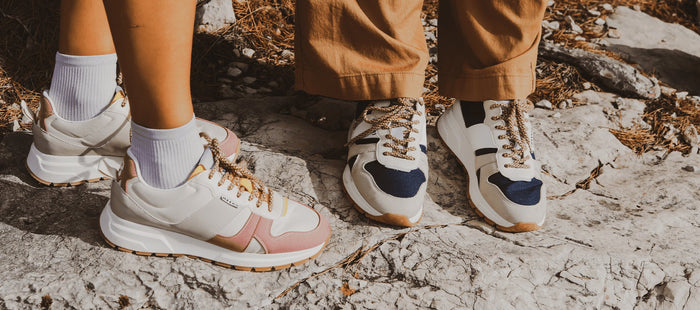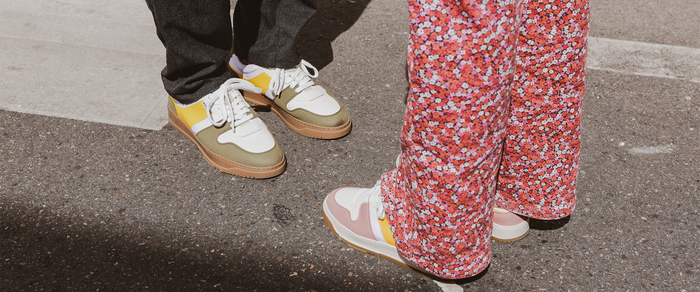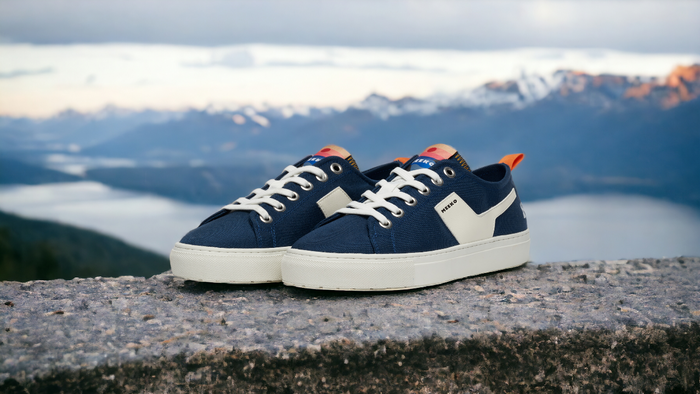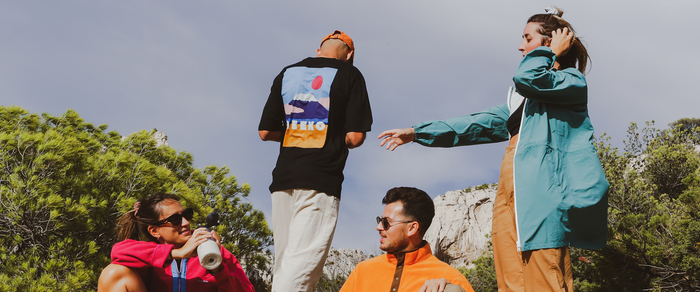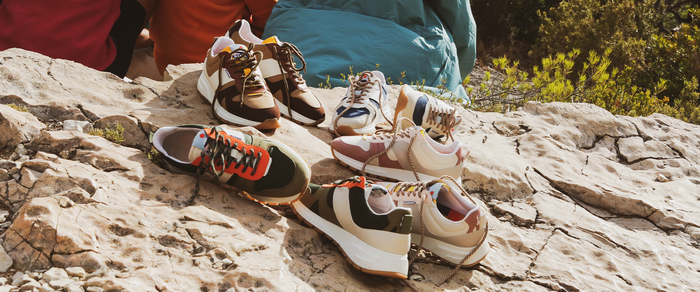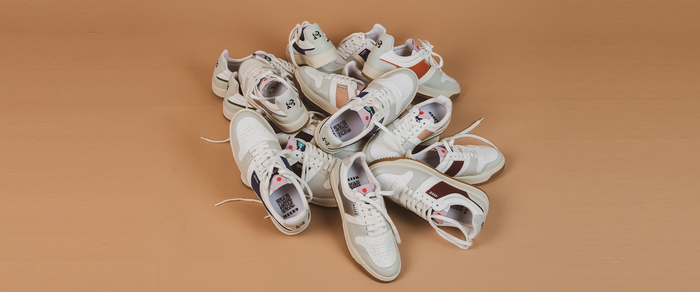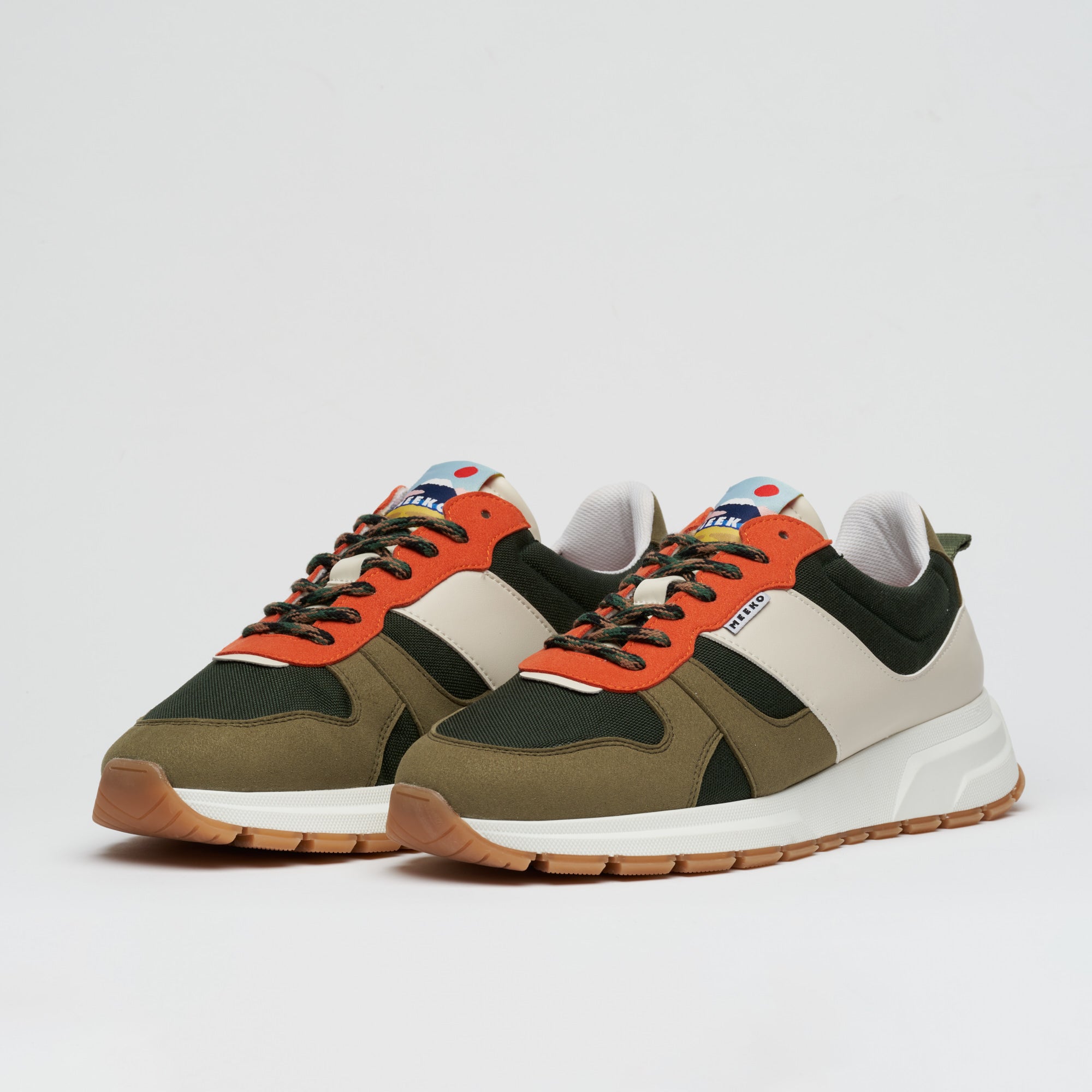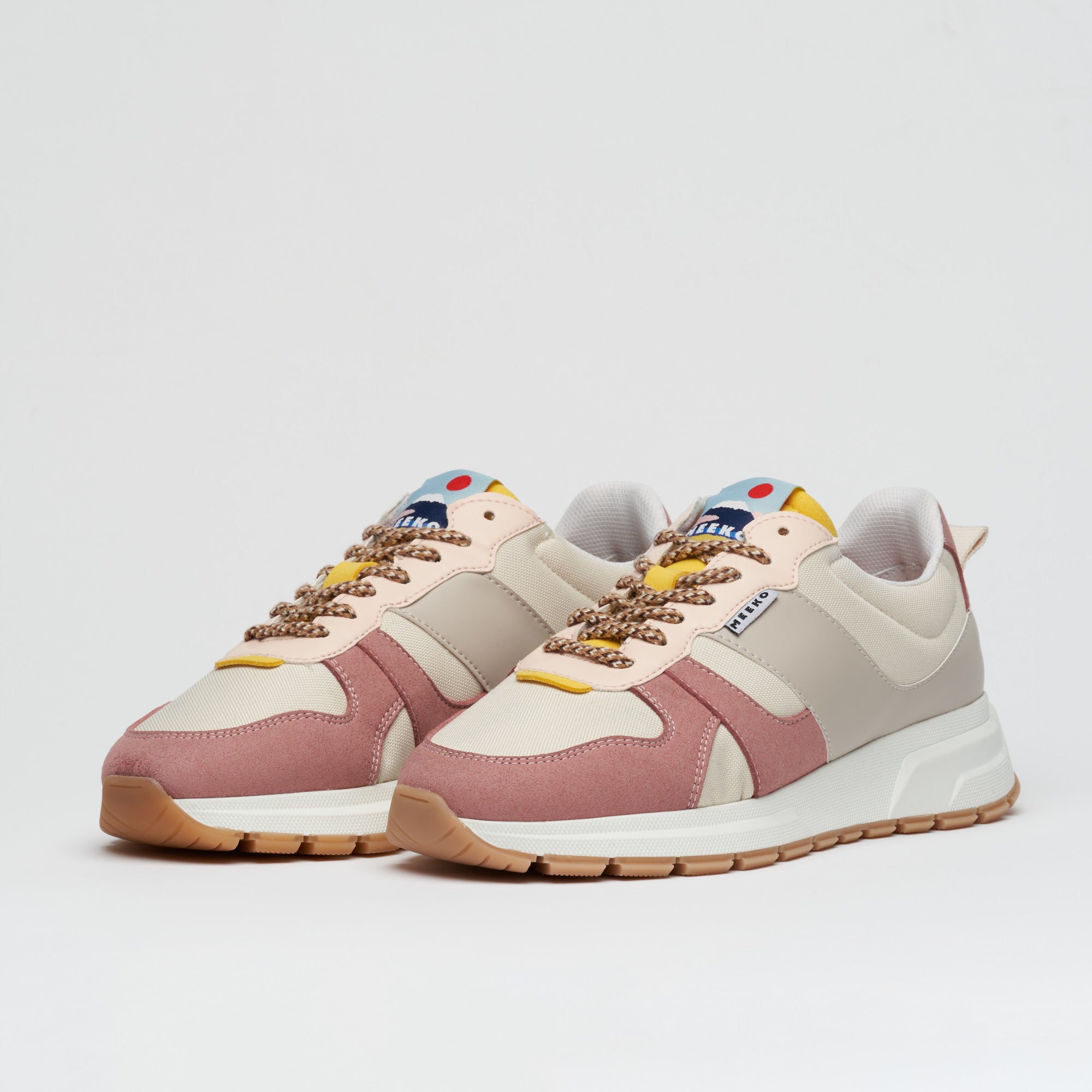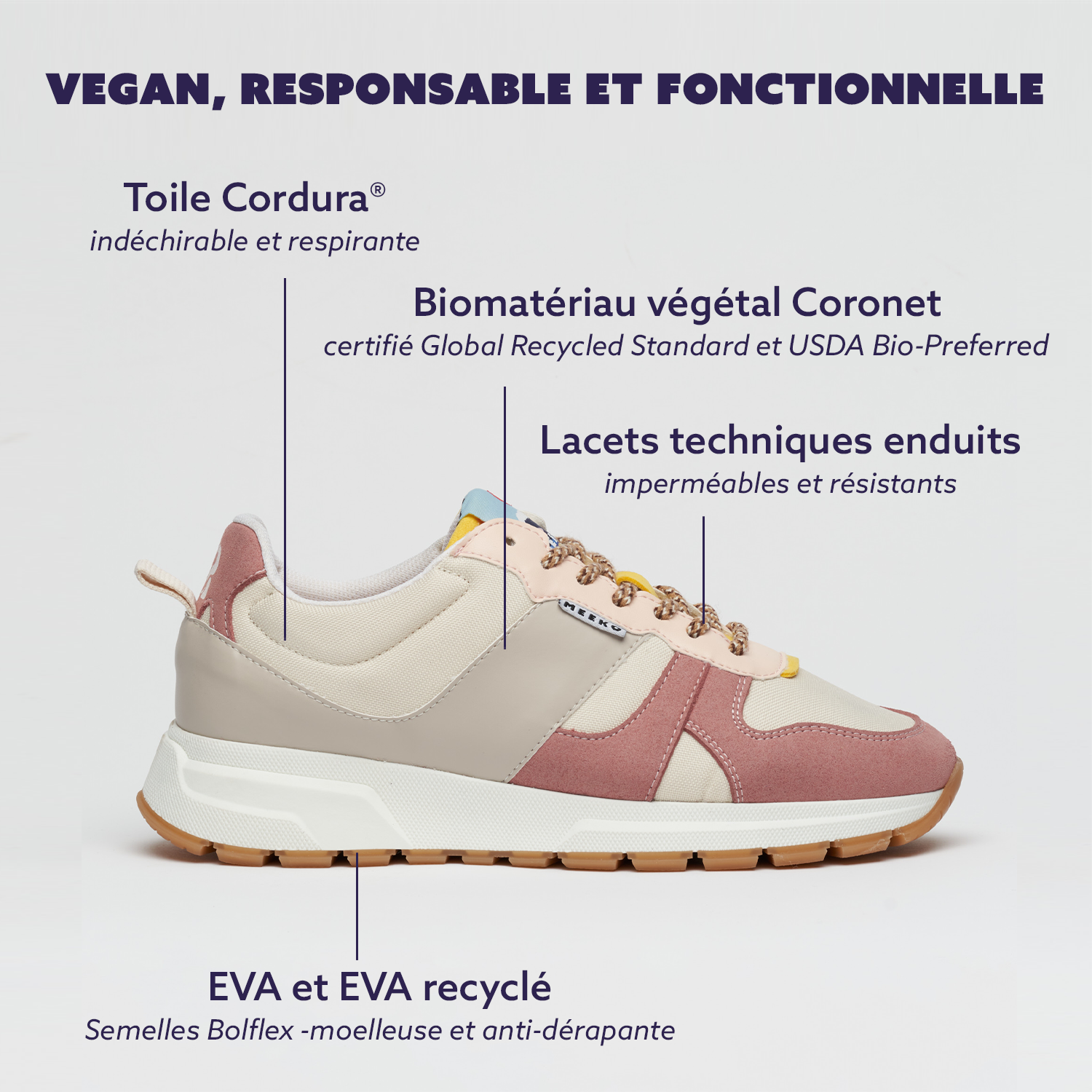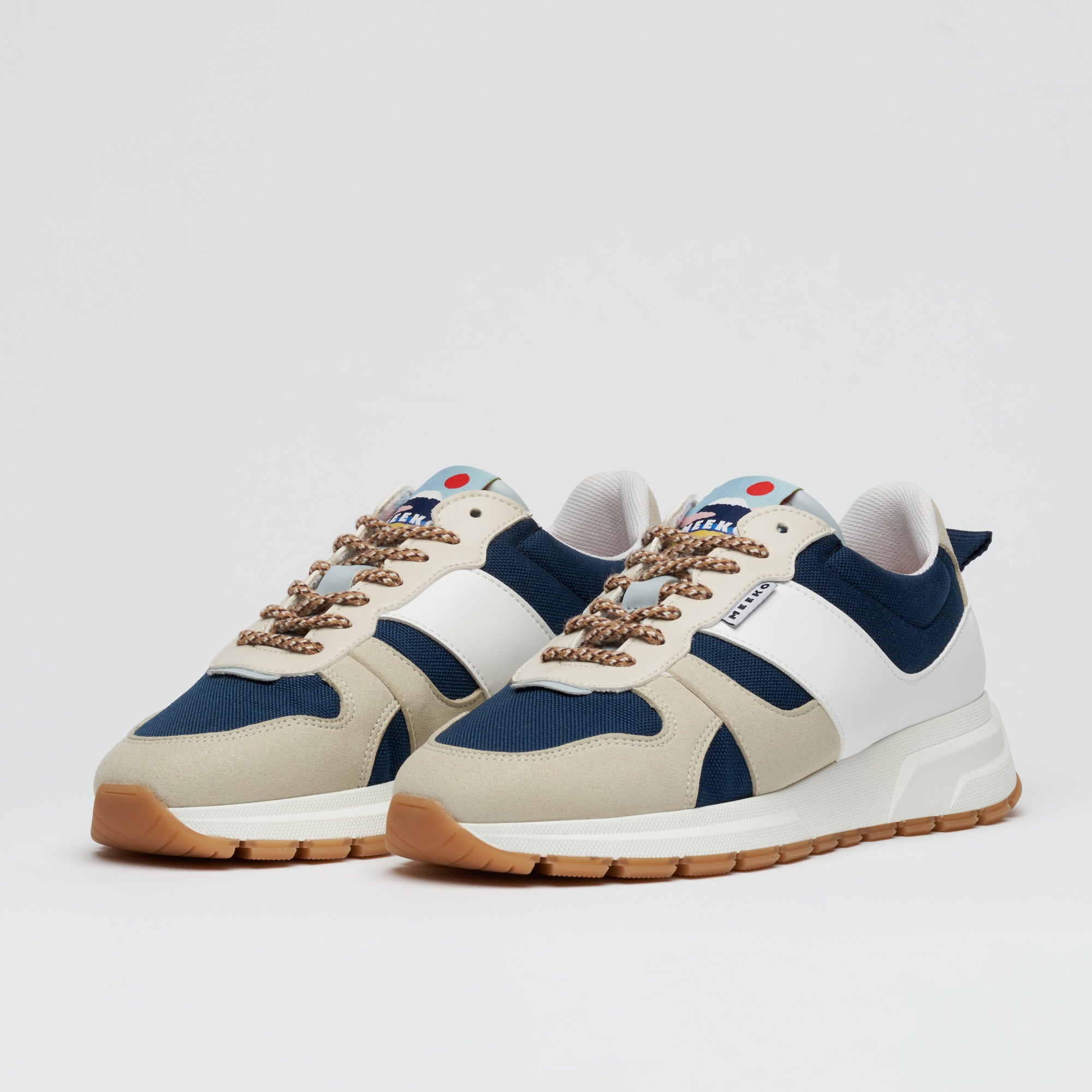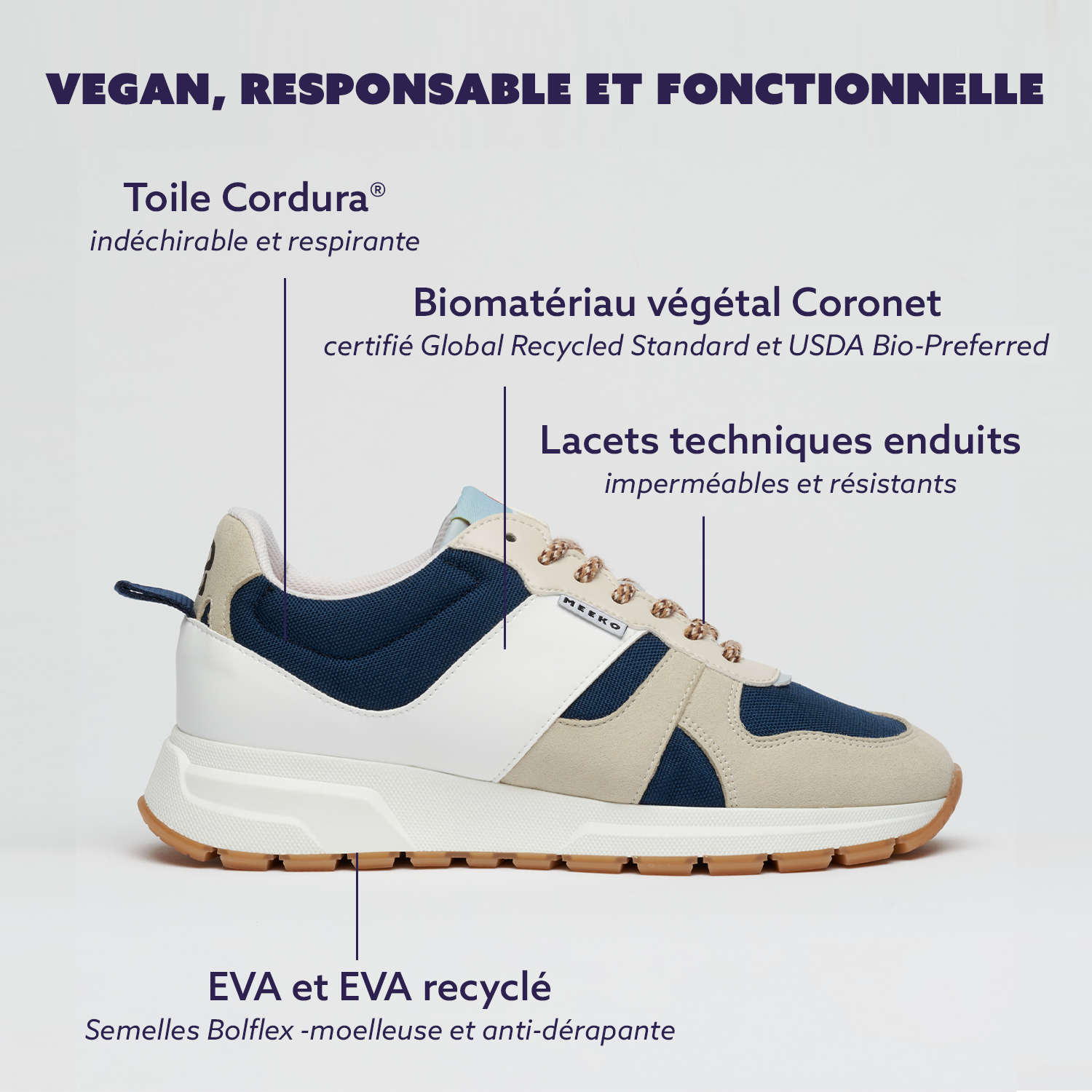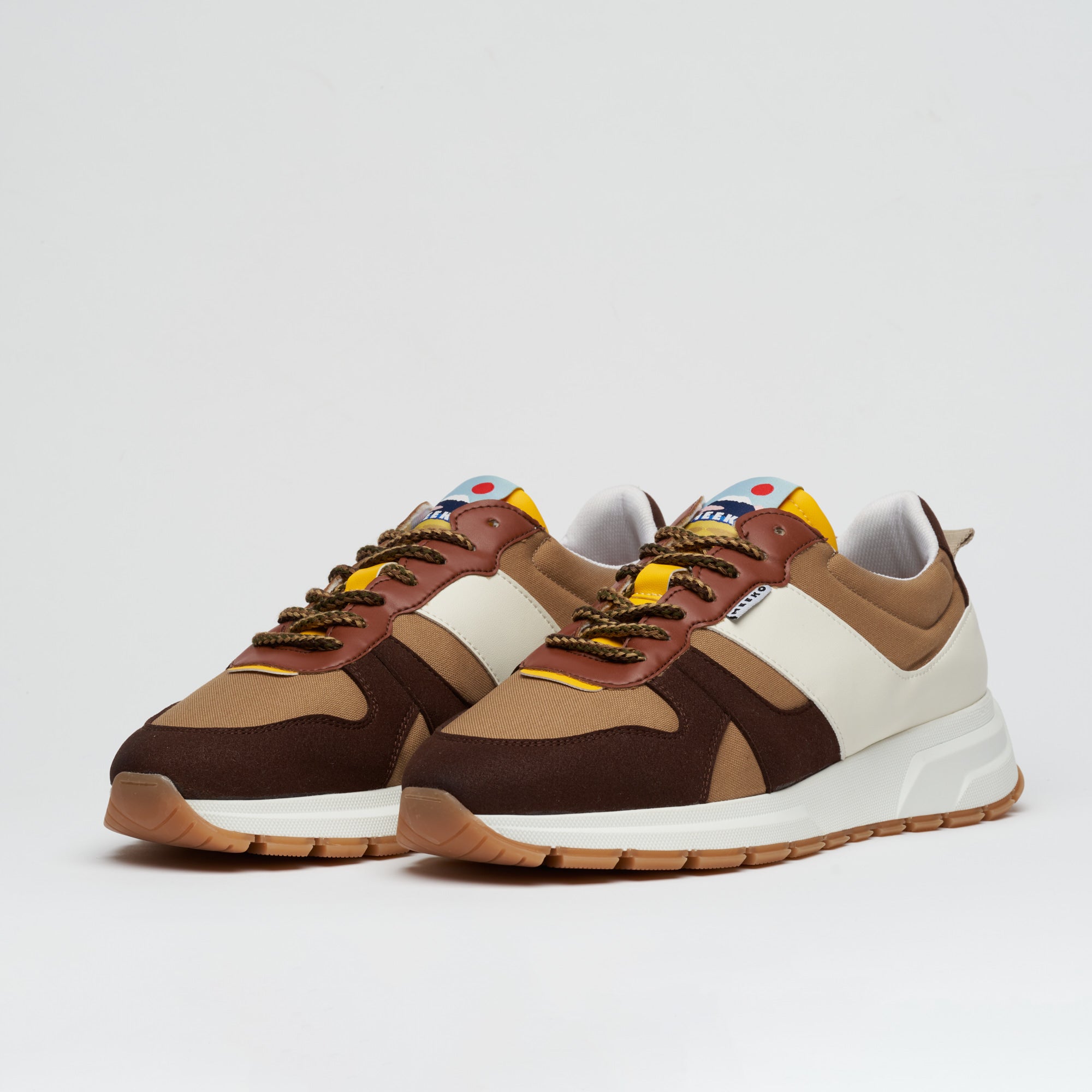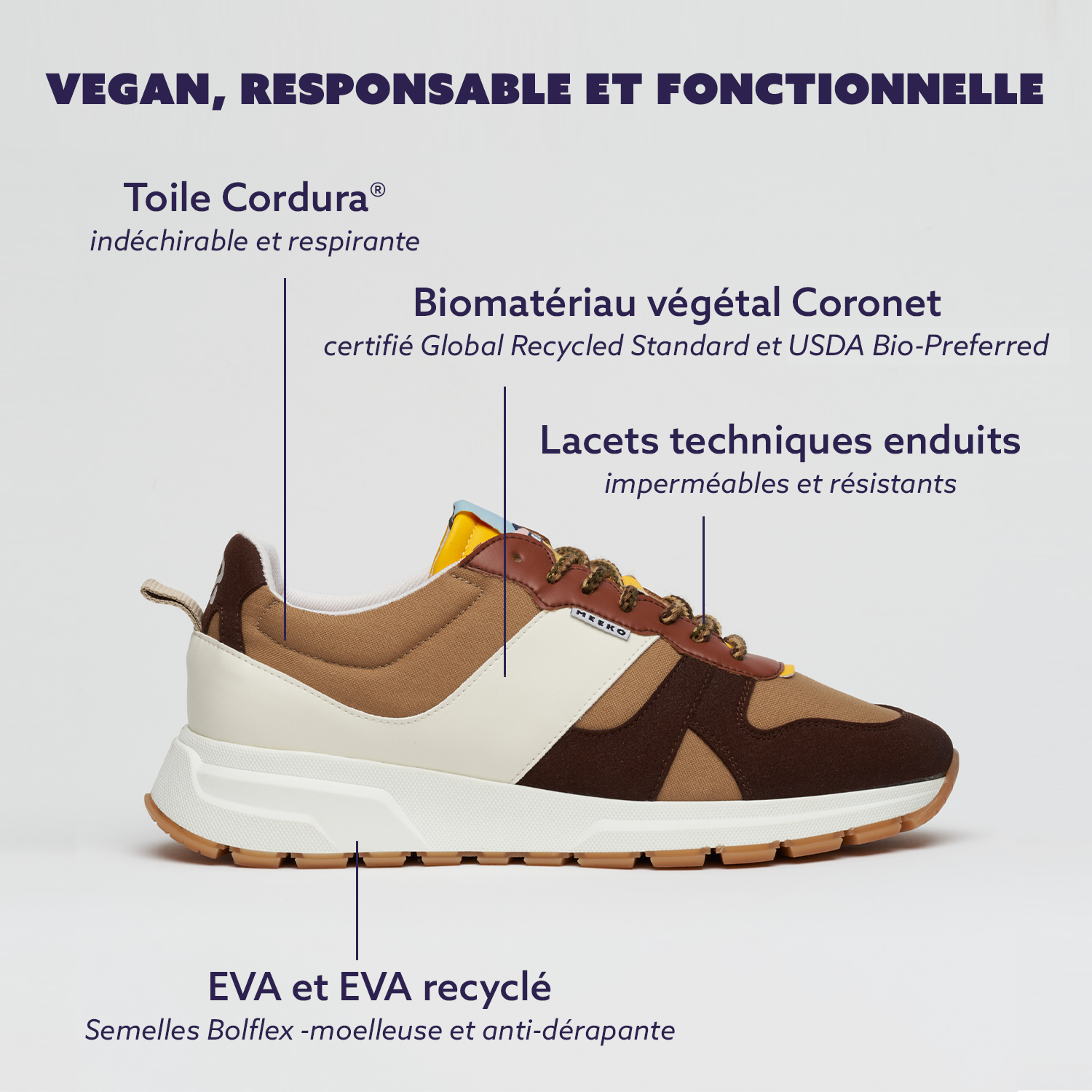What is the history of sneakers? We tell you everything!
The name "sneakers" is on everyone's lips today. It is used as much by streetwear aficionados as by creators, brands, influencers or even major shoe distributors to designate a type of shoe inspired by models intended for sport and intended for everyday use. Adored above all for their style and comfort, sneakers make them sneakers adapted to the constraints of everyday life, adapted to any context or situation. Moreover, the first criterion for buying sneakers is very often the style, the desire to take care of your look!
However, before being the fashion tidal wave that we know, sneakers had many other uses. That's why I suggest you unfold together the history of sneakers, from the 19th century until the arrival of MEEKO (😜) and its COCO PONGO .
How did sneakers become trendy?
Contrary to what one might imagine (especially when one read " Shoe Dog ", the biography of Phil Knight, founder of Nike, which we can only advise you!), sneakers did not appear in the years 80 with the advent of hip-hop. If it is indeed the artistic current which favored the growth of the phenomenon, sneakers actually appeared at the end of the 19th century!
The arrival of rubber soles
It is the time when the use of rubber is more and more important, and in more and more sectors: industrial revolution obliges. It will first settle in the automobile and then take the plunge into the shoe sector. Among the firms that initiated the movement is the "United States Rubber Company", now known as Uniroyal. It was created in 1892 and will divide its activities around rubber processing into several divisions.
Originally grouping more than 30 brands, the Keds brand (1916) dedicated to the design of shoes experienced remarkable growth thanks to the success of what will remain the very first pair with a flexible sole.

Put on sale in 1917, this pair will remain in the annals thanks to its comfort, its style, and above all its discretion affirmed by this rubber sole surmounted by a canvas upper. This mix of materials allowed her to move around without making too much noise, which is why she very quickly found the nickname "sneaker" derived from the English "sneak on" or in our best French "arrive en douce". If these were very far from what we call sneakers today, the Converse brand will bring an iconic model a few months later, much closer to current models: the Chuck Taylor All Star.

Both arrived during the Second World War, the models of Keds and Converse had a destiny extremely linked to politics. From the end of the world war, the most affected countries such as Germany, Italy or Japan will all encourage their people to practice regular physical exercise, for health of course, but above all to prepare to a possible new conflict. These statements will lead many fascist movements to appropriate them for sports meetings. The image of the sneakers will be greatly degraded. These will also be adopted by the biggest criminals, the biggest mafias of the time.
Sneakers, a new symbol of protest and denunciation
Shortly before the Second World War, the association of sneakers with politics reached a new level. We are at the Berlin Olympics in 1936 when Jesse Owens, who was running in shoes designed by Adi and Rudolf Dassler, an African-American athlete, won the 100 meters, the 200 meters, the 4x100 relay and the long jump. Historical. He will then enrage Adolf Hitler, the infamous leader of the Nazi regime.
At the end of the war, during which the army requisitioned the know-how and resources of the two brothers to have the boots of its soldiers made, the sneakers would become a symbol of protest and denunciation against the segregation which was raging both in the United States and the rest of the world.
In 1968, Olympic Games in Mexico, the 2 American runners John Carlos and Tommie C. Smith will both finish on the podium, 1st and 3rd in the 200 meters. On the podium, they will raise their left fist and remove their PUMA Suede, a symbol of belonging to the Black Panther movement.

Following this event which marked the history of sport and the fight against racial segregation, the 60s will be acquired by PUMA Suede, a commercial box of the time. These will have almost succeeded in the feat of "forgetting" three iconic models of Adidas that will be born during this decade, the Stan Smith in 1964, the Superstar and the Gazelle launched in 1968 by the German brand. Nike would join the party soon after, in 1972, when they introduced their Cortez model.
How the Rise of Basketball Is Driving the "Sneaker Phenomenon"
The rivalry between the 2 flagship brands, Adidas and Puma will continue on the floors of the NBA. The 3-stripe brand will make a big breakthrough thanks to its Superstar model, which then equips 75% of players in the franchise at the end of its first year of marketing (!). Thanks to its famous "shell-toe" in front and its raised heel offering protection of the Achilles tendon very adapted to the solicitations of the basketball body, it will be adopted by huge stars like Kareem Abdul-Jabbar (we hope you know this legend) who will then change his pair of Pro-Keds for that of the German brand. With Puma, the brands put an end to the Keds and Converse domination of the NBA. They were very quickly accompanied by Nike, which took an irrevocable advantage following the launch of the mythical Air Force 1 model in 1982. to the practice of aerobics and later yoga.
Then in 1984, Nike would become legendary when it signed a contract with iconic basketball player Michael Jordan . Shortly after his NBA debut at the Chicago Bulls under number 23, he will obtain a pair bearing his image: the Air Jordan 1. The Air Jordan did not respect the dress codes imposed by the NBA franchise, since it wore the colors white , red and black of the Bulls team in which MJ would work wonders. A fine of 5,000 dollars was therefore imposed on him for each official match played with this pair, however banned. Nike agreed to pay this fine to continue to see the Jordan 1 on the courts, which caused much ink to flow (notably in the Wall Street Journal and the New York Times ) and accelerated its rise in basketball.

These sneakers will begin to leave the NBA circle to invade American playgrounds, such as in Baltimore where young basketball players are increasingly wearing this model that has become iconic. They will even go so far as to personalize their pairs, to counter the lack of colors available at the time, which will play a major role in the development of the "sneaker phenomenon".
Hip-hop culture as an ambassador
Coming out of the basketball courts, sneakers are quickly taking hold in the streets. This is where hip-hop culture will play a big role, first in the world of breakdance, with the groups of "B-Boys". To practice this dance, between art and sport, breakdance enthusiasts need a pair of sneakers capable of giving them great stability without jeopardizing their style, so specific to the discipline. The PUMA Suede, thanks to its thick sole and its many colors, will stand out as the breakdance shoe par excellence. Then will come the golden age of the adidas Superstar that the rappers of the group RUN DMC will bring to the top of the hype. As pure fans of the pair of sneakers they wore all the time, they went so far as to dedicate a hit "My adidas" to it in 1986, and obtained a sponsorship contract from the brand afterwards, after an anthology concert at Madison Square Garden where they invited a senior representative of the brand.

How did the 90s become the era of running?
Despite the incredible rise of basketball, Nike does not forget that it is with athletics that it emerged from the shadows. After conquering the courts with the Air Force 1 and Air Jordan 1 models, Phil Knight and Bill Bowerman, its founders, will return to their first love, their favorite sport, namely running. The objective displayed to Tinker Hatfield (famous designer), create a pair that is both modern, stylish, but suitable for running to regain market share lost little by little in the sector. The Air Max 1 was born, a model known worldwide today which will be the first success of a long series of variations to which the firm at the Comma pays tribute every year during Air Max Day. Futuristic with its air bubble and damping technology still at the forefront today. It will very quickly be copied on this technology by Reebok models, such as the Reebok Pump, which remains one of the biggest successes of the brand, bought by Adidas in 2005.
Today, the success of sneakers is such that they come in different forms and technologies, each crazier than the next. They are also worn almost exclusively in town now. They are the "sneakers".
We think we can contribute with MEEKO to this phenomenon but by bringing a more virtuous and sustainable form, are you helping us?
